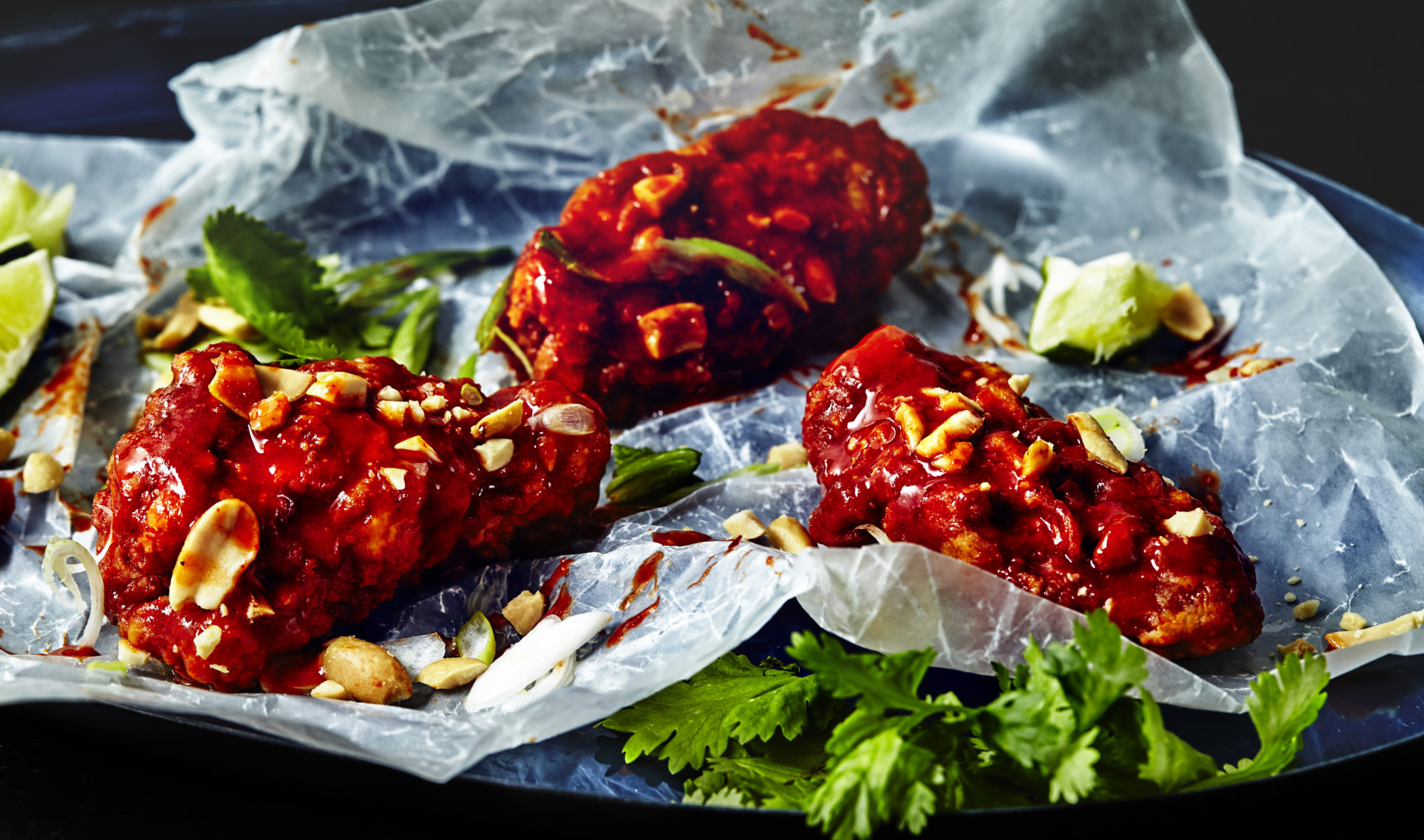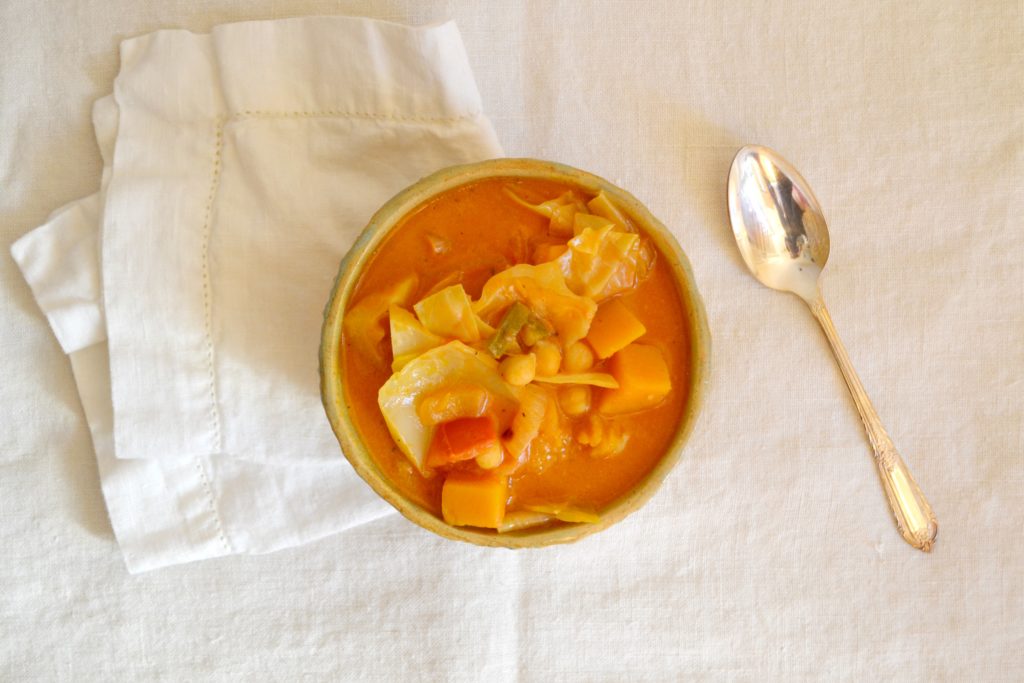
Join PN Level 2 for less than $9 USD/day! Affordable monthly payments now open.

Peanuts: you either love them, or you’re deathly allergic. Peanuts, which are actually not a nut but a legume, grow underground and then are dried and often roasted before they find their way to your mouth. Rich and nutty tasting, peanuts are often consumed either as whole nuts or ground into peanut butter, of which a jar can be found in most North American households. Peanuts and peanut butter are high in protein and rich in manganese, niacin, folate, magnesium, phosphorus, and vitamin E. Peanuts are delicious in both savory and sweet preparations.
Peanuts: You either love ‘em, or you have a deathly allergy to them.
Peanuts are one of the most common allergens today, and one of the most common causes of food-related deaths.
But if your immune system is cool with them, peanuts are pretty delicious.
Commonly referred to as a nut, the peanut is actually a legume that grows underground. During harvesting, the leafy portion of the peanut plant is pulled out, taking mature peanut pods and roots with it. After the plants are uprooted and inverted, the peanut “bushes” are left to dry roots-up in the sun for a period of three to four days. Then, the peanut pods are separated from the bush and transferred to a drying trailer, where warm air is circulated to further dry the peanuts. (Peanuts contain 25-50% moisture when they are first dug up, and must contain less than 10% moisture in order to be stored without risk of spoiling.) Once they are sufficiently dried, the peanuts are distributed to various manufacturers where they will be processed a little (like a bag of roasted, in-shell peanuts) or a lot (like a candy bar featuring a sticky ribbon of peanut caramel).
Whether you are a child, a broke college student, or a fully-matured adult, there is probably a well-frequented jar of peanut butter in your life. Peanuts and their products are ubiquitous, although rising rates of severe peanut allergies have meant that peanuts are often prohibited from schools, and although they were a common snack offering of yesteryear, are rarely served on planes, trains, or in medical facilities.
Peanuts are also referred to as groundnuts or goobers, and was a favorite food (in butter form, on a sandwich, with a banana) of both Elvis Presley and former president Bill Clinton.
Peanuts may come either in-shell or de-shelled, or ground into a creamy or crunchy butter.
Peanuts and peanut products have a rich, nutty, and slightly starchy flavor, and are somewhat similar in taste to roasted sunflower seeds.
In their shell, peanuts typically come in two’s per pod. The peanut shell is a beige-colored, wrinkled pod with a cinched waist, and is easy to break open with your hands. If you are lucky, you may come across a pod that contains three peanuts, or less lucky, one peanut.
The peanut itself is caramel-colored, oval-shaped, and may have a papery reddish-brown covering (which is edible, although often removed). The nut has a seam that runs down the middle, making it easy to split into halves.
In butter form, peanut butter made from 100% peanuts will be thick, creamy, and slightly runny. Natural peanut butters, which will be free of emulsifiers and stabilizers, may separate, meaning the oil may separate from the solid matter and seep to the top. This is normal and may be rectified with some vigorous stirring. Another option is to store the jar in the fridge, upside down. As soon as you bring your jar of natural peanut butter (or other natural nut butter) home from the store, put it in the fridge upside down for easy spreading and no stirring.
Peanut butter comes in two ways: smooth or crunchy. Note that the “crunchy vs. smooth” debate is often a heated and emotional topic. When preferences diverge, it’s safer for friendships and marriages to just buy one jar of each.
One ounce of dry roasted, unsalted peanuts (about 28g) has 166 calories, 6.9g protein, 14.1g of fat, 6g of carbohydrates, 2.4g fiber, and 1.4g sugar.
Two tablespoons (about 32g) of smooth, unsalted, natural peanut butter has 190 calories, 9.0g protein, 16.0g of fat, 6.0g of carbohydrates, 2.0g fiber, and 2.0g sugar.
Peanuts and peanut butter (made from 100% peanuts) are an excellent source of manganese and niacin, and a good source of folate, magnesium, phosphorus, and vitamin E.
You may have heard that peanuts contain a toxic chemical called aflatoxin. Aflatoxin is a compound that is produced by mold, and is present in trace amounts in a variety of nuts and grains. Although it is impossible for a peanut product to be completely free of aflatoxin, acute aflatoxin poisoning is extremely rare, and only occurs when peanuts have been improperly stored.
Peanuts are nearly ubiquitous, and you can find them almost everywhere, from large gourmet health food stores to small neighborhood convenience stores. (In all cases, shop at stores with high product turnover, and always consult the best before date on the package.)
That being said, not all available peanut products are created equal. Many peanut products may be heavily salted, artificially flavored, roasted in poor quality oils, and/or coated with sugar. In the case of peanut butter, many brands add emulsifiers and sugar, changing both the texture and nutritional value of the original product.
In the case of whole peanuts, choose either peanuts that are still in their shell, or shelled and dry roasted. If you are someone who is sensitive to sodium, you may want to select unsalted varieties.
When purchasing peanuts, look for specimens that, whether in-shell or shelled, are free of signs of shriveling, discoloration, or moldiness. If they still have their shell, choose nuts that have shells free of cracks, scars, or tiny wormholes. The peanuts themselves should be crunchy and dry. If they are rubbery or rancid smelling, pass them over.
In the case of peanut butter, look at the ingredients. The simplest, most natural options should contain only one or two ingredients: peanuts, and (optionally) salt.
Many health food stores and bulk food stores have peanut butter grinders where you can grind whole peanuts yourself into a container. While this is a fun way to obtain freshly ground peanut butter, these machines are susceptible to bacterial and mold contamination, so make sure the store you are shopping at cleans their machines regularly.
As noted above, be aware that natural peanut butters will often come with a layer of oil at the top. This is normal, and occurs when the oil from the peanuts separates from the solid matter, and can be remedied by stirring the product until the oil has been re-incorporated into the solids.
Like most nuts, due to their high oil content, peanuts and peanut products can be prone to rancidity so are best stored in cool environments, such as the fridge or a cool, dry cupboard, where they will keep for about six months. Stored in the freezer, whole peanuts will store for up to a year.
In the case of peanut butter, follow the directions on the label, as storage instructions may vary from product to product. Generally, natural peanut butter should be consumed within three months if kept in a cool, dry cupboard, or six months if kept in the fridge.
Depending on how they come, peanuts and peanut products are usually ready to eat and don’t require any special preparation. The only exception are peanuts still in their shell, which must be shelled before consuming. Shelling peanuts is best done on a sunny day at a baseball game.
Whole peanuts may be eaten as a snack by the handful, or sprinkled over salads or stir-frys. Peanut butter is a classic companion to toast or crackers, and is delicious in smoothies or just by the spoonful.
Take caution, however, when consuming large spoonfuls of peanut butter at once. It is immensely sticky, and like sinking in quicksand, you may only make matters worse if you furiously struggle against it. Stick to small mouthfuls, and stay calm.

This richly textured and spicy stew is hearty and satisfying, and makes a great meal on a chilly day.
Prep Time: 10 minutes Cook Time: 40 minutes Yield: 8 to 10 servings
In a very large pot, heat coconut oil over medium high heat. Add onions, ginger, chilis, and salt, and cook until onions are translucent, about five minutes.
Add tomatoes, and cook until they begin to release their juices. Once this mixture is nice and liquidy, add tomato paste, broth, and peanut butter, and stir until peanut butter has emulsified.
Add squash, reduce the heat to a simmer, and cover your pot to let squash cook for about 20 minutes. Then, add cabbage, and cook, covered, for another 10 minutes.
Once squash and cabbage are soft and cooked, add your chickpeas, and give the stew a good stir. Add salt, pepper, stir again, and then let sit for five minutes before serving.
Enjoy!
Precision Nutrition’s Encyclopedia of Food expands every single month as we highlight new foods and showcase beautiful food photography. If you’d like to stay up to date, simply click this link. From there, we’ll send you a FREE copy of our recipe book. We’ll also let you know when new and delicious foods are added to the site.
Peanuts: you either love them, or you’re deathly allergic. Peanuts, which are actually not a nut but a legume, grow underground and then are dried and often roasted before they find their way to your mouth. Rich and nutty tasting, peanuts are often consumed either as whole nuts or ground into peanut butter, of which a jar can be found in most North American households. Peanuts and peanut butter are high in protein and rich in manganese, niacin, folate, magnesium, phosphorus, and vitamin E. Peanuts are delicious in both savory and sweet preparations.